



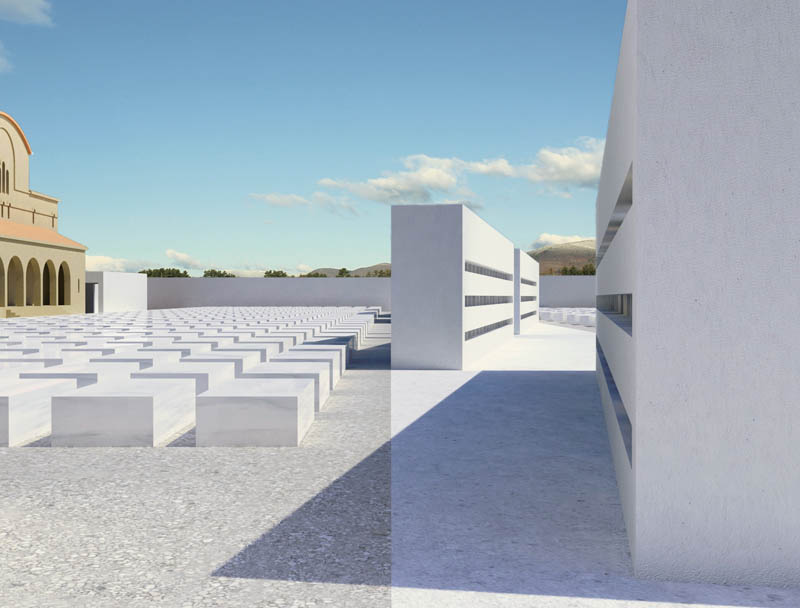

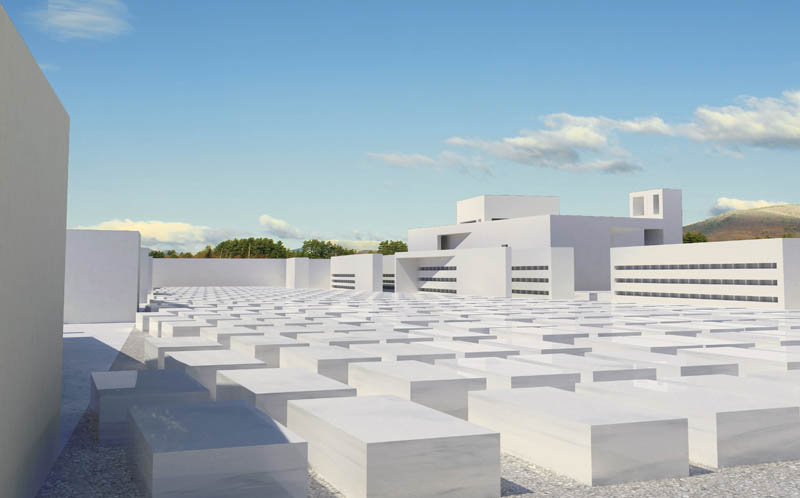

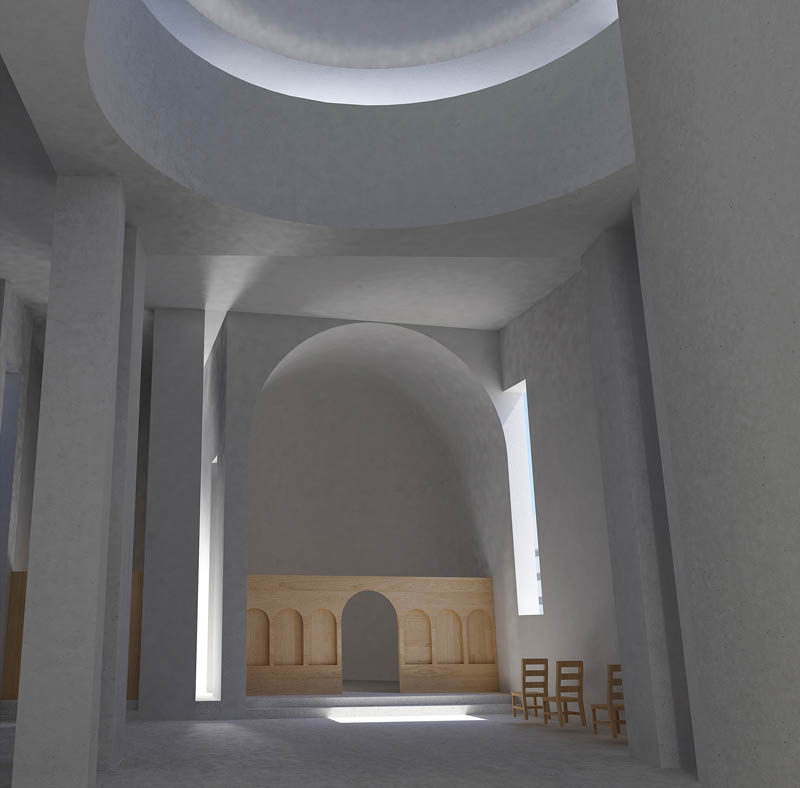

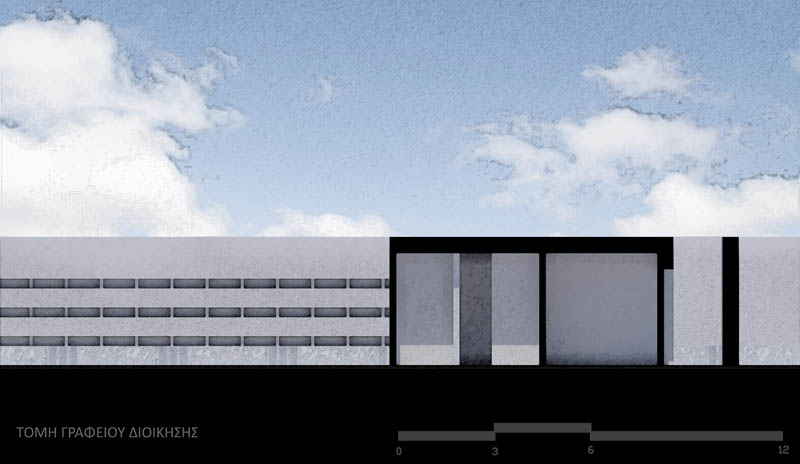

The main subject of this diploma project is the expansion of the cemetery of the Holy Church Zoodochou Pigis in Trikala, as well as the design of the infrastructure relative to burial ceremonies. A chapel, a café, a flower shop and an administration office.
The Zoodochou Pigi church was built in 1932 and was expanded in 1961. In 1987, a much bigger cruciform church was constructed in the northern side of the old one and it was inaugurated in 2005. The cemetery was located right behind the sanctuary of the church up until 1932 and since then it is relocated in the southern side of the church.
A chapel is a small Christian church which includes a sanctuary, a particularly holy space of main churches and cemeteries among others. It is used for the service of special occasions consisting of a family or a small group of people.
The infrastructure enclosed within the walls follow an axis that separates the cemetery and the church from the rest of the urban grid. A threshold between two worlds. This diploma project aims to create the conditions of remembering of the dead as well as the design of spaces that favor the isolation of the visitors for mourning of the dead and recollection.
Supervisor: Kanarelis Theoklis
Reference Number: 739


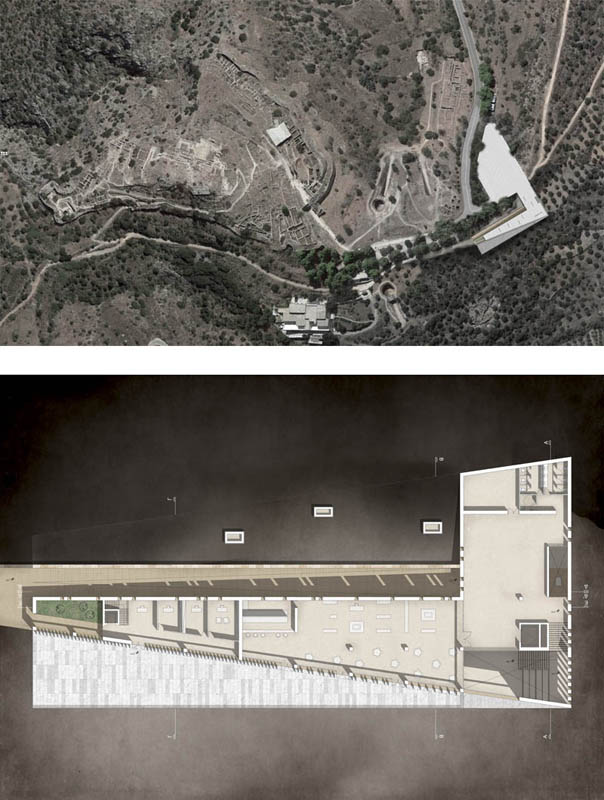

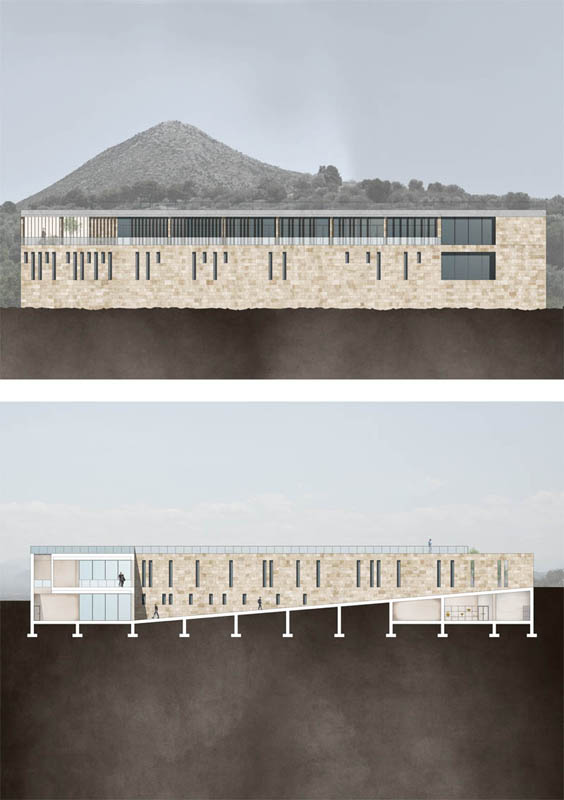

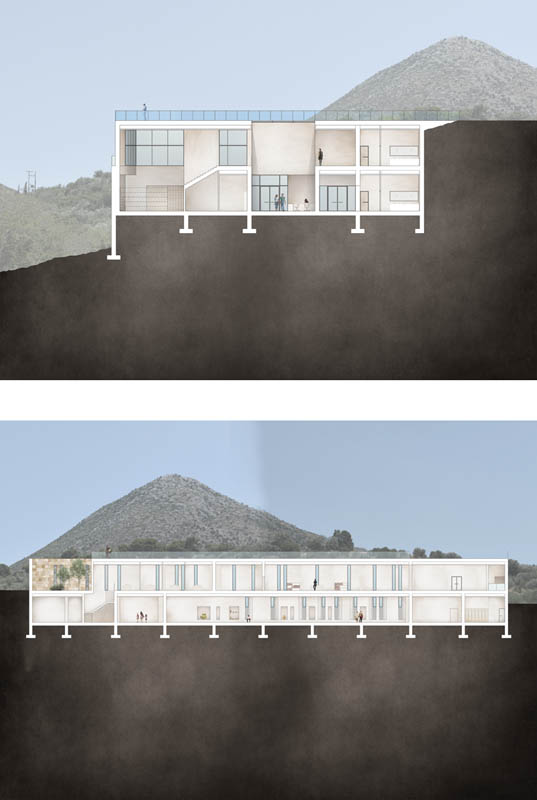

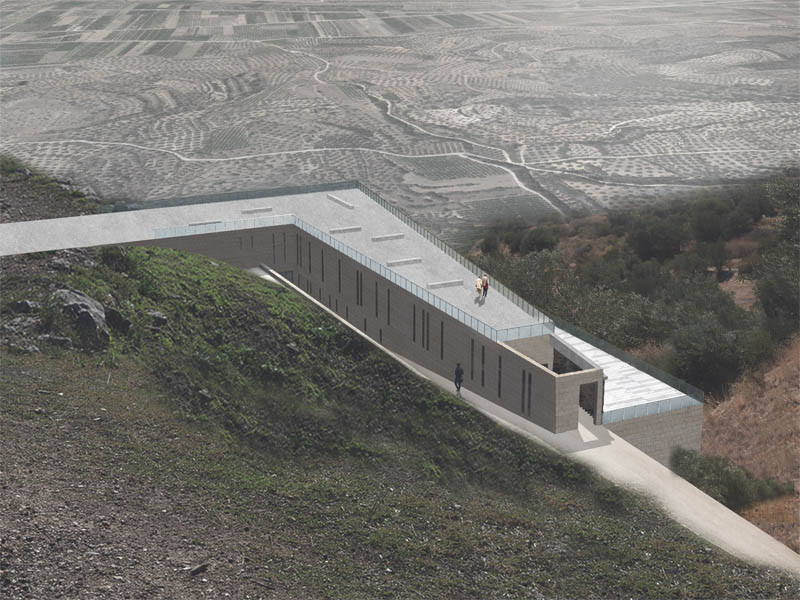

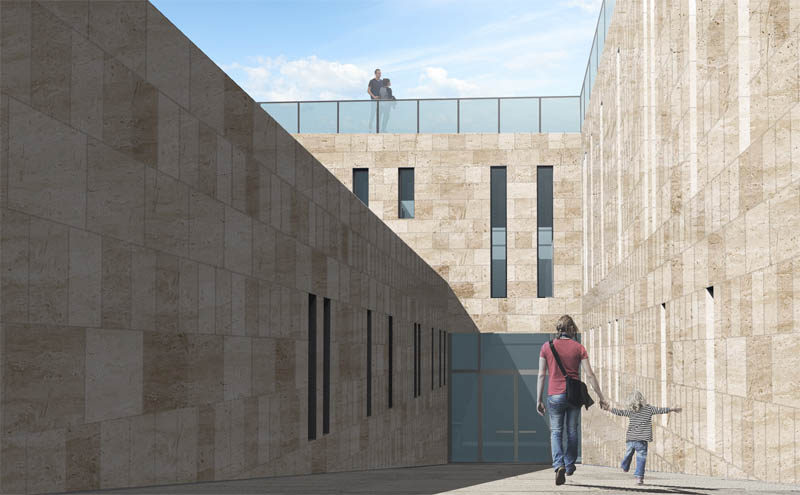

The "rich in gold Mycenae", as Homer calls them, have always been an attraction for thousands of people. The rich mythology surrounding the name of Mycenae, the ongoing excavations at the site, the imposing Lions gate, the vaulted tombs, the abundance of findings and the role of Mycenaean society and culture during the Bronze Age, make the archaeological site one of the most popular in Greece.
In this thesis, a proposal is made for the construction of a new museum in the archaeological site of the Acropolis of Mycenae. Its purpose is to highlight the Mycenaean civilization and meet the needs of thousands of visitors of the site. An additional goal is to accommodate a large part of the collection of findings from excavations at the archaeological site, the number of which reaches 35,000.
The new museum is located on the northwest side of the Acropolis with a large part of it being underground, in order to better blend in with the environment. The main spaces of the building include a reception hall, a permanent and periodic exhibition space, maintenance laboratories and warehouses, staff spaces, shop and cafe. The main concept of the design is the long corridor that leads to the entrance of the museum, inspired by the corridors of the vaulted tombs and the way their visitor enters in them. The exhibition space is arranged around this corridor, divided into 5 sections, integrating simultaneously a visual contact with the maintenance laboratories. The rooftop is accessible, offering a panoramic view of the surroundings and is directly connected to the parking lot.
Supervisor: Manolidis Kostas
Reference Number: 777




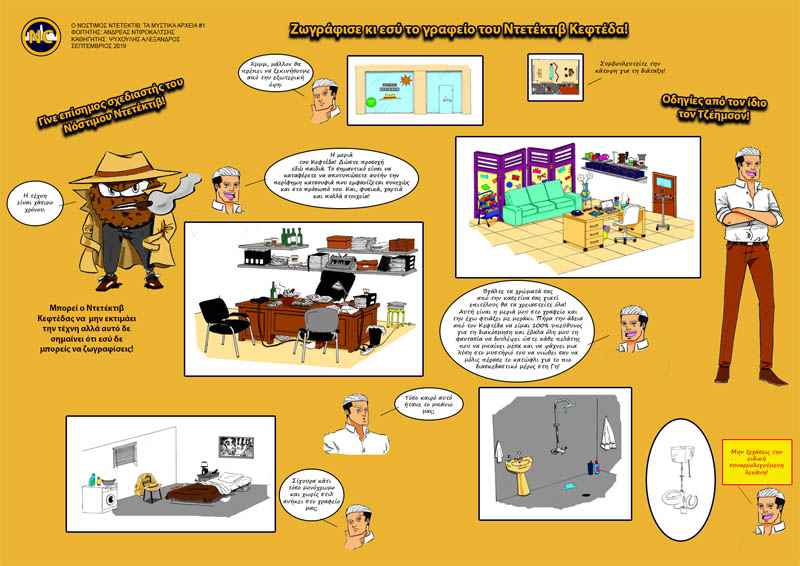



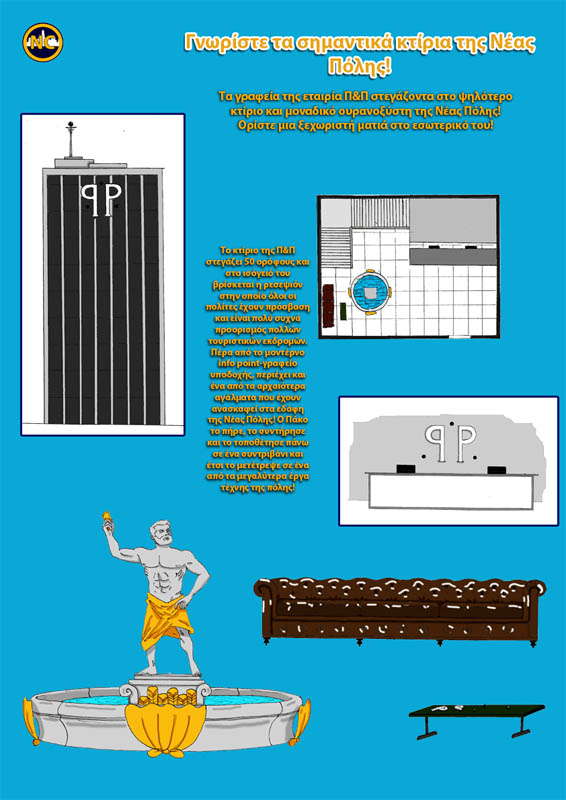



In the world of comics reality meets an imagination that can break the rules of reason of the world without making it look fake or difficult to believe. When a comic book story is created, its world, however incongruous it may be with reality, if it is whole and coherent it can be as real as the one in which the reader lives. And that usually happens because there is a certain similarity with reality. The basic things that are enough for the reader to be convinced are put in a familiar state and then begins a free-for-all game with imagination. Because many things are possible with drawings, which depict things with the simplicity of the line, they leave room for the reader to complete the picture on his own and thus, through the lack of filters that the narration of cartoon usually follows, make it his own.
So, in comic books, architectural questions end up transforming from serving individual, social and aesthetic needs, to questions like what would the office of a meatball that works as a private detective look like, can the building of a fast food restaurant, whose owner is obsessed with hamburgers, look like a hamburger itself? How can you draw a house in which imagination prevails and every item and furniture is thought of as having sentience, and how does a surrealistic tunnel that starts from an office of authority that rules by controlling powers more ancient than man himself and leads to every alcove in the city look like?
Supervisor: Psychoulis Alexandros
Reference Number: 778


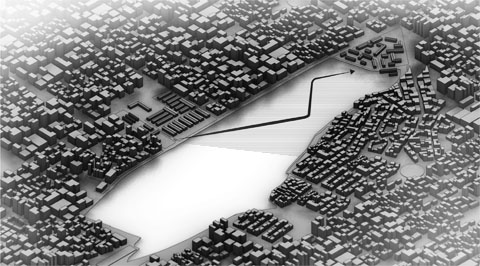

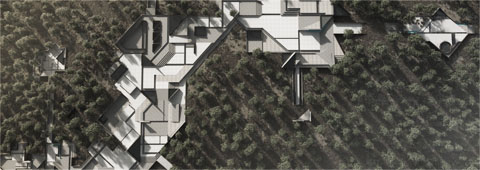

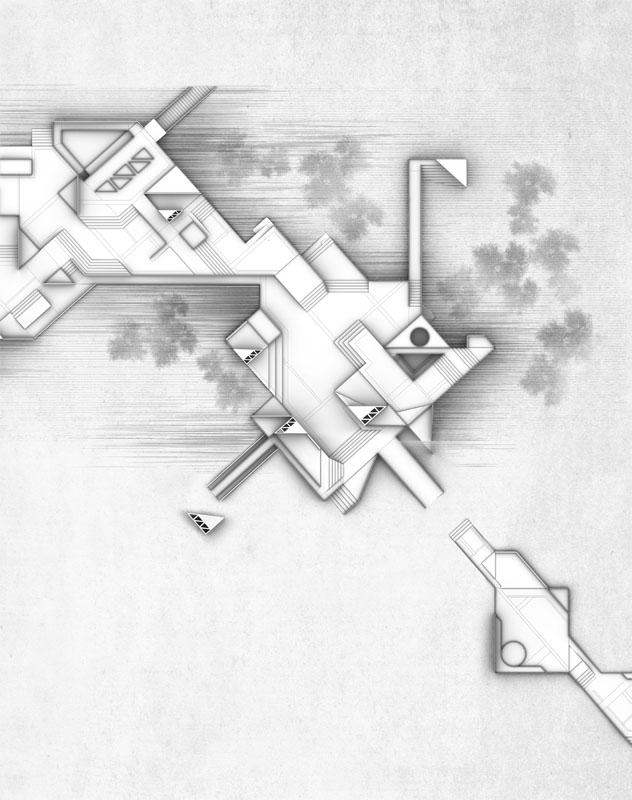

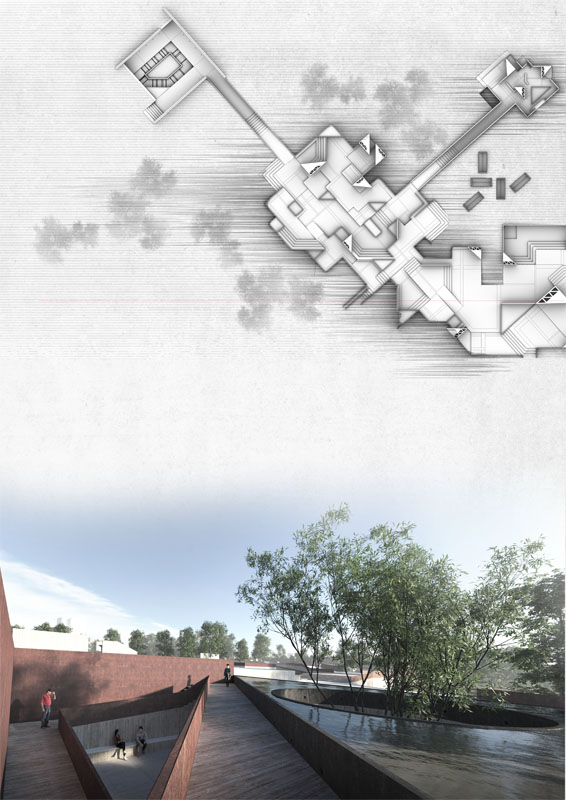

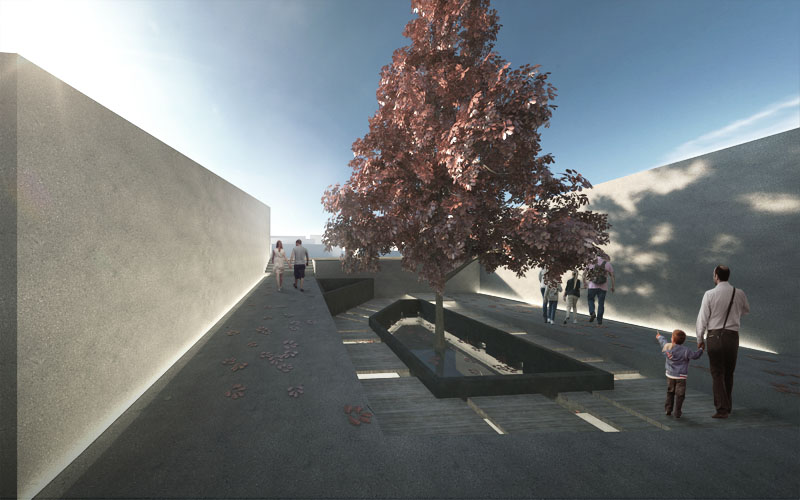

Ninety-seven years from today Smyrna, “the cradle of Greek civiliziation”, crumbles before the blazing flames caused by Turkish fire. The vast majority of residential areas are lost and thousands of citizens perish due to this unimaginable monstrosity. Immeasurable damage is inflicted upon the city and its citizens are about to go through an unprecedented tragedy.
One of the areas that accommodated a small portion of refugees was Podoniftis. In 1932, its name was changed into what we know today as Nea Filadelfeia in Attica, a name that was given to the area as a remembrance of the city of Filadelfeia in Asia Minor. The Grove of Nea Filadelfeia is one of the limited in numbers greenspaces in Attica, nevertheless, the present conditions render the Grove inaccessible and marginally dangerous.
This dissertation is discussing a project which aims at the revival of the Grove through a space conformation. The compositional approach that was followed had as a main goal, not only to offer easier access into the Grove or some rest areas in a beautiful and refreshing environment in the center of the city, but also to revive memories from the Asia Minor Catastrophe and, in a blissful environment, pay the owed tribute to the many souls lost on the September of 1922 at the Asian Minor coastline. More specifically, through the study of the timeline shortly before and after the Smyrna Catastrophe, the design implied was selected in order to represent, to the degree that this is doable, the historic events and the results of the lethal blaze.
In a few words, the project “A Place of Commemoration and Revival” is a project inspired by the tragic events of the Asian Minor Catastrophe and an attempt to incorporate a space in the Nea Filadelfeia Grove that honors the precious natural environment which is located in the center of the city.
Supervisor: Kanarelis Theoklis
Reference Number: 737


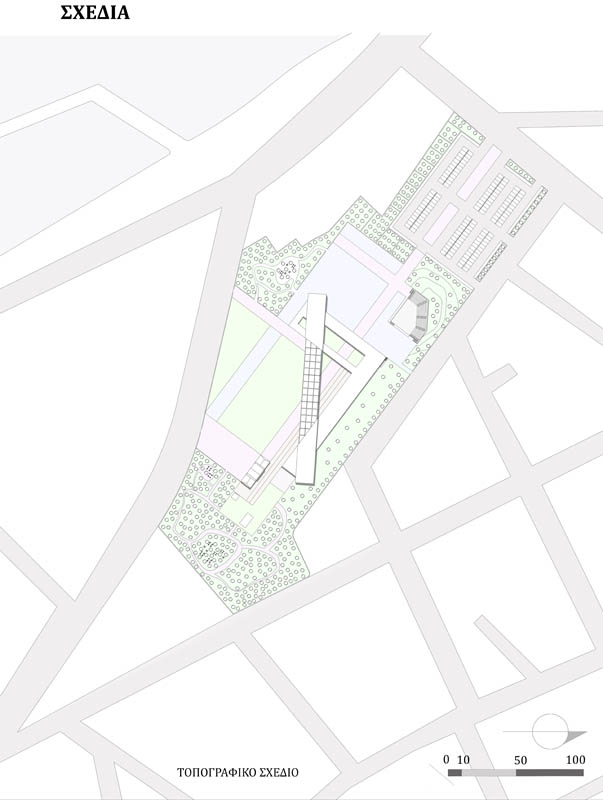

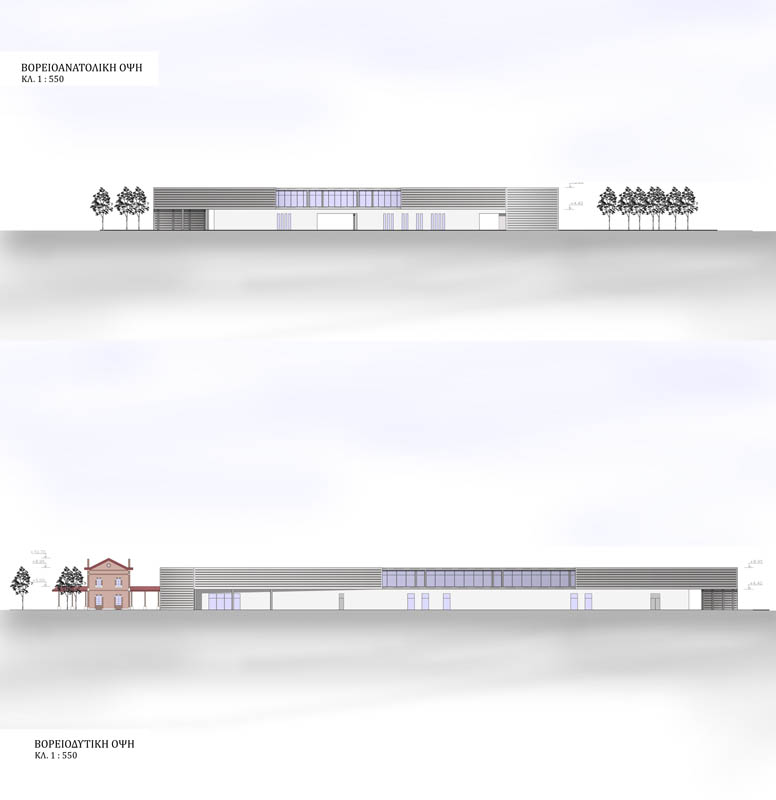

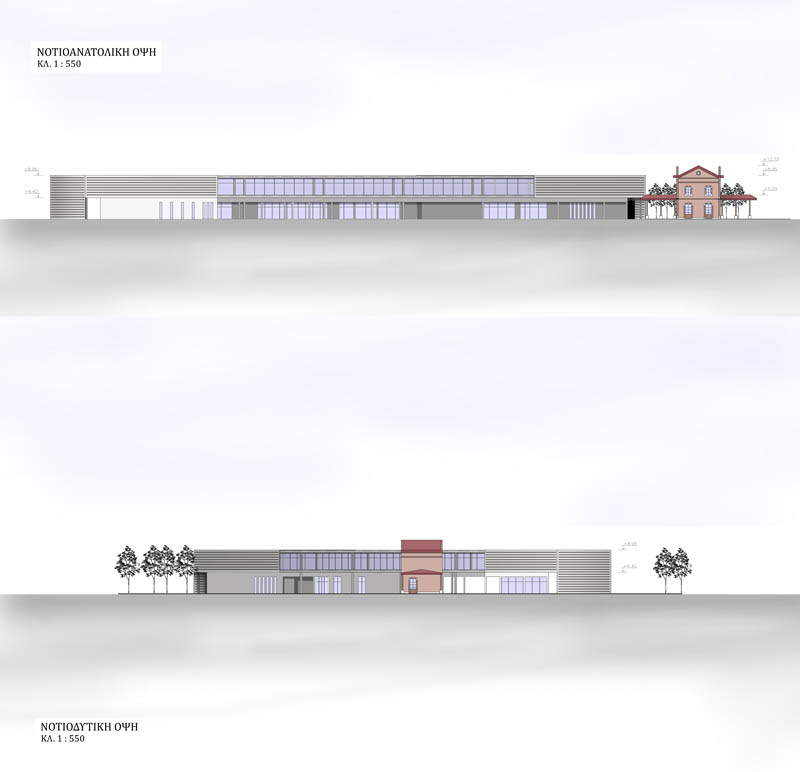

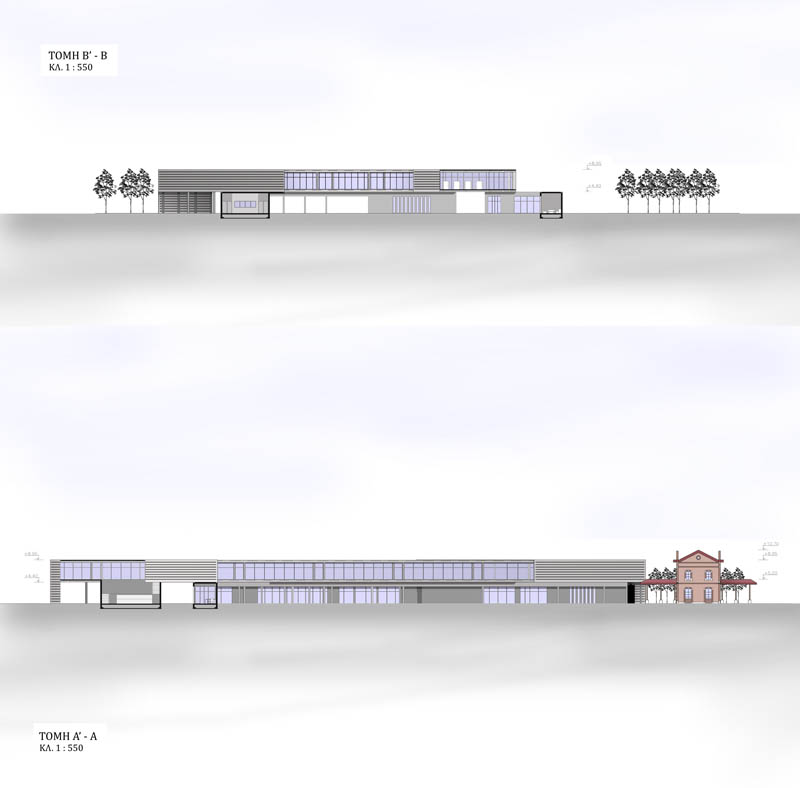



People's need for movement is lost in the depths of history. With the discovery of the locomotive, the revolution in the transport comes. The train is gaining ground as a means of transport, linking regions and facilitating travel. Over the next few years the railway network is stretched and stations are being built. These stations, often landmarks of the areas in which they are located, become cultural points.
In this paper we examine the area of the train station in Agria, Volos. The project for the railway connection between Volos and Larissa, the work of the railway company of Thessaly, in the plans of the Italian engineer Evaristo de Chirico, included the connection of Volos with the villages of Pelion. In this context, the station was built in Agria. Now the route Agria - Volos does not take place and the station has become useless. Nevertheless, it continues to be a landmark.
By studying the area of Agria, a basic need that was found was the need to concentrate cultural sites at one point. For this reason, it is proposed to create a cultural center. As a point, the train station is chosen as a memorial space and culture carrier capable of supporting the functions of such a building. In addition, the location in a nodal area for the area is ideal for hosting cultural uses, while the proximity to Valis Resort, which attracts conference tourism, makes it an ideal spot.
A museum space will be hosted in the building, with reports on both the history of the site and the history of the railways. The exhibition will continue on the station building, as the main objective of the study is the simultaneous connection of the new one with the existing train station building, as well as the highlighting of the station.
Supervisor: Adamakis Kostas
Reference Number: 756












This diploma thesis explores the interaction of a university institution within the boundaries of a city. This effect becomes evident in the city of Volos where the university evolves multiple in the urban web, with the active grid of buildings, facilities and the university community shaping its environment, and defining the urban landscape. The students, with their desires and needs give a new rhythm, penetrate in most sectors of the social fabric of the city and shape the city life.
The aim of the project is to create a new centre for education, work and residence that will consolidate and complement the existing "network" of university facilities in the city of Volos. This centre will create direct synergies, primarily among the students themselves, the inhabitants of the surrounding space, and furthermore an osmosis with the entire urban area.
This concept is materialized with the design of three new university departments, a student residence, and a coworking space. The buildings are contained within a recreation park that is addressed to the whole city. Wooden pavilions are placed in the park that trigger activities for recreation and relief.
This installation is placed at the grounds of the old Cotton Mill in Nea Ionia, reusing the old abandoned shells that today constitute a blank zone which disrupt the continuity of the surrounding area with the urban space.
The concept formation was enriched with the findings of a survey addressed to the future users of the site.
Supervisors: Kotionis Zissis, Trova Vasso
Reference Number: 735












Our thesis began with questions concerning the free movement of the body in crowd situations.
How does the body move?
How is it touched?
Which are its personal boundaries?
In order to answer this, we studied the gathering of “the many” through field investigation and theoretical framing of the term “crowd”. Through the investigation we decided that the focus of our study concerns the singular body in its absolute relationship to the collective, the crowd. New questions arose.
Crowd of bodies or plain crowd?
Crowd of singularities or crowd of multiplicities?
Multitude or crowd?
The deeper we investigated the more we came to realize the meaning of the term and the challenge of representing the crowd experience. In addition to the study of the crowd experience through the study of the events, we decided to reproduce the experience through the design and realization of the Animal Party. We had already observed that there is a complete design of crowd conditions in all the events and we wanted to experiment with that through the party. We designed a different crowd condition and we executed it.
However, the weakness of the representation of the crowd experience remained since it has to do with a feeling that is translated into words or means of design with difficulty. When we wanted to communicate it with each other or to third parties we would use gestures, sounds and metaphors. In order torepresent the experience, we decided to design diagrams and create videos and soundscapes from all the events we observed (including or own) in order to come closer to the feeling of the crowd.
Supervisor: Giannisi Phoebe
Reference Number: 776












Walking under huge plane-trees. The sun is burning, the heat is unbearable. The gurgling spring water, softens my thirst. I dip my feet into the river, but it doesn't seem enough. Its clear water asks me to dive. It happened! On the background, faintly seen women prepare their laundry. Sunset is coming. Time for a last dive....
Water incidents of another era, everyday city practices which have been lost and forgotten, confirming Lithaeos' river name (the river of oblivion in Greek).
In a time when the urban planning is oriented more and more to the restoration of nature in the city and their constant interaction, it is appreciated more effectively the revival of the lost water experience and the redefined relation between the citizens of Trikala and the river.
Since most of the past century’s activities would seem nowadays dull, out of date, even dangerous, the revival is not considered as an identical reinstatement of watery practices but as re-approaching and reinterpretation, aiming their accession to the urban reality of our days.
Considering the relation between water and human body, we observe that we can experience the element of water in many different ways. Based on that ascertainment, the idea of incidents is actualized via the creation of three zones of progressive body contact with water: aquatic squares, baths and urban beach. These zones can function individually or combined, leading to a multilevel final experience.
Supervisor: Gavrilou Evelyn
Reference Number: 749

